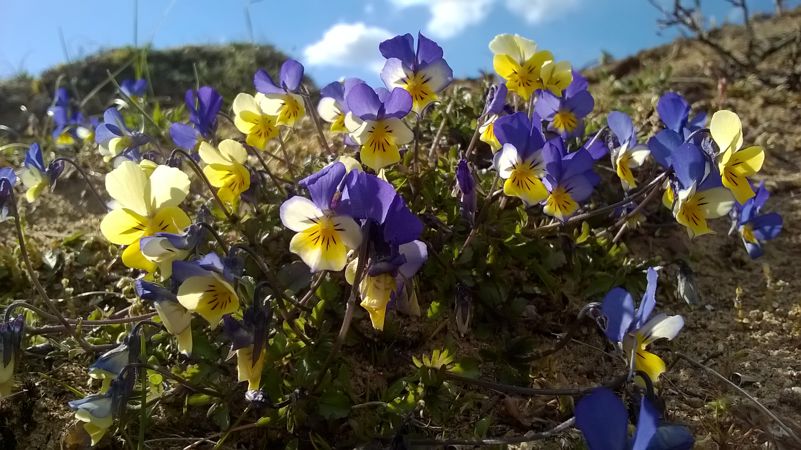Right plant, right place

By Duncan Ludlow, Site Manager, Merthyr Mawr National Nature Reserve
The phrase ‘right plant, right place’ is often quoted by gardeners.
Given the right conditions plants will thrive. This is something I’ve yet to achieve in my own garden as I continue to battle with a heavy clay soil and an inquisitive pet beagle!
The phrase applies equally well to our nature reserves. Unfortunately, as gardeners know all too well, it not only applies to plants we want to grow but to plants we would rather didn’t!
There are many plant species on the sand dunes at Merthyr Mawr that need controlling. Many of these were intentionally introduced to the UK as garden plants. But, if they escape into the wild, they can threaten our native species and natural habitats.
For the past 20 years, a large part of managing Merthyr Mawr Warren National Nature Reserve has involved controlling and removing non-native sea buckthorn, Hippophae rhamnoides.
Originally introduced onto the dunes to help stabilise the highly mobile bare sand, the seabuckthorn did its job all too well! At one stage, the plant covered nearly a third of the reserve and threatened to smother the remaining dune plants and habitats.
Twenty years on, we are still removing buckthorn (see photo of buckthorn berries) - although a large proportion has been cleared and the threat has greatly diminished.

And, unfortunately, sea buckthorn isn’t the only invasive plant at Merthyr Mawr. This winter we’ve started to control the spread of buddleia, Buddleja davidii on the dunes.
You may be surprised we’re removing buddleia - often planted in wildlife gardens to attract butterflies and other insects (it is often called the “butterfly bush”).
Originally from China and introduced into the UK in the 1800’s, if left unchecked it can spread quickly and threaten dune grasslands.
Beguiled by the beautiful colours and exotic nature of introduced plants, we often fail to appreciate and undervalue our native plants.
While not as showy as the flowers of buddleia bushes, numerous smaller flowers found in dune grasslands provide a rich source of nectar for butterflies and other insects.
Wild strawberry, dune pansies, wild thyme, bugle, restharrow and many more plant species, often overlooked, all contribute to a colourful display during the spring and summer.
Our work to control buddleia will therefore be beneficial to many of the butterflies found on the dunes.
And the problem of invasives isn’t limited to non-native species.
Natural succession means that many native plants, if allowed to spread, can also threaten dune habitats and their species.
In the past, this may not have been as great an issue as there were enough areas of dune habitat to support dune species. The dynamic nature of sand dunes would allow new, younger sand dunes to be created.
Today, the area of sand dune habitat in the UK is much reduced and what is left has become stabilised with little or no early stage sand dunes being created.
As a result, we need to carefully manage what we have left.
For many years, NRW has been mowing dune slacks - the wetter hollows - to prevent willow and birch form spreading. These slacks host a wealth of plant species including southern marsh orchids, Dactylorhiza fuchsia, early marsh orchids, Dactylorhiza incarnata, marsh helleborine orchids, Epipacta palustris, and the rare liverwort petalwort, Petallophylum ralfsii.
This winter, the Sands of LIFE project has also been mowing a number of areas on the dunes to help manage dune grassland habitat. The mowing supplements the grazing carried out by cattle and the resident rabbit population.

Together, these management projects help prevent the spread of burnet rose, Rosa pimpinellifolia, to avoid grasslands becoming too overgrown, and prevent the spread of scrub.
In my time working in conservation, I’ve learnt it is much easier to make a mistake than get things right.
Unfortunately, mistakes such as introducing the wrong plant to the wrong place can have dramatic and devastating consequences for the environment. And it can take years to repair.
The management work at Merthyr Mawr is trying to correct some of these by removing invasive plants before they become as big an issue as sea buckthorn.
Hopefully we can learn from past mistakes and prevent them re-occurring to help protect our natural environment for future generations to enjoy.
